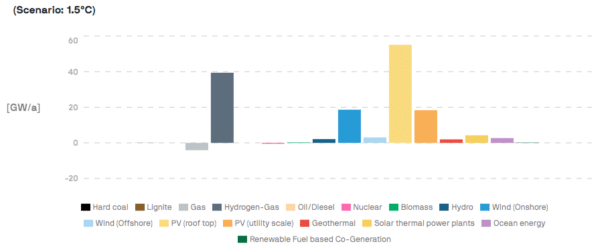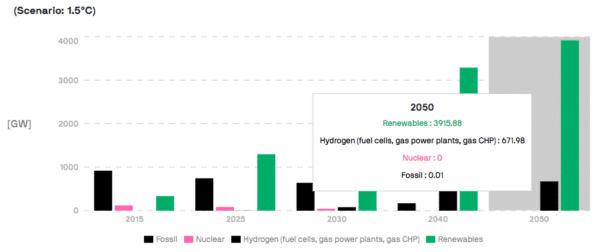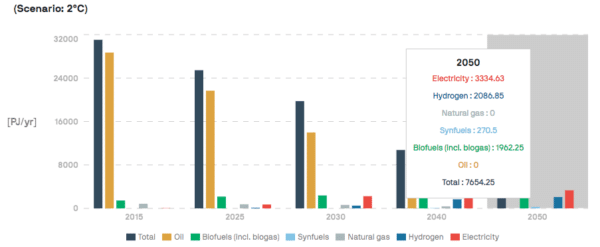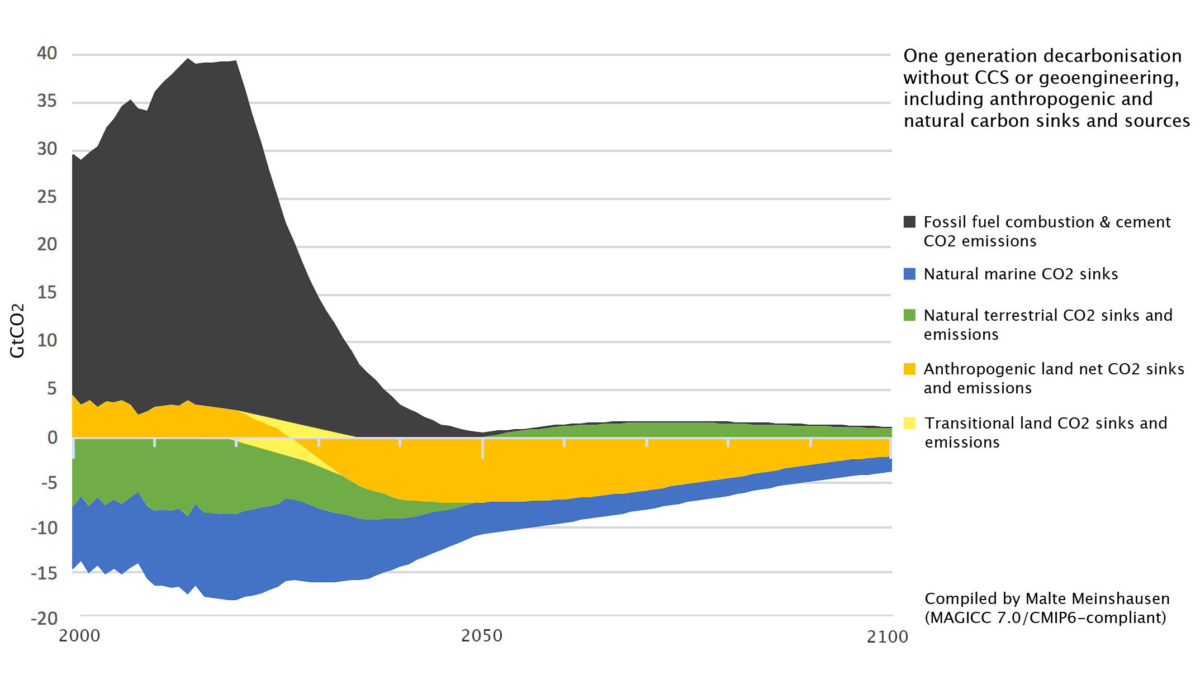73 GW per year. That’s how much solar PV a new study led by Dr. Sven Teske of the Institute for Sustainable Futures at the University of Technology Sydney says that North America needs to put online each year until 2050 in order to meet the 1.5 degree scenario that was agreed upon by nations around the world in 2016.
That’s roughly seven times as much solar as was deployed in the United States last year, which makes up more than 80% of final energy demand in the region. But that is not all. Dr. Teske’s study says that North America will also need 4 GW of concentrating solar power plants, 22 GW of wind (mostly offshore). Not to mention 39 GW of hydrogen to gas capacity, and various other renewable energies.

The One Earth Climate Model was developed in partnership with the University of Melbourne and the German Aerospace Center and supported by the foundation of actor and climate activist Leonardo Di Caprio, and was released early this morning. The report charts pathways for decarbonization of major world regions through 100% renewable energy and hydrogen, in order to keep global temperatures from rising above 1.5 or 2 degrees Celsius.
Massive changes
The changes needed are nothing if not massive. North America had nearly 1,000 GW of fossil fuel generation in 2015, and according to this analysis the continent would need nearly four times this much capacity in renewable energy resources to fully decarbonize.

Graphic: University of Technology Sydney
This includes “dispatchable” renewables, and Dr. Teske’s team sees a particular role here for concentrating solar power, which has failed in previous years to compete with solar PV on cost. The capacity of batteries is less clear, although the report finds that even for a 2 degree scenario 45 terawatt-hours per year of batteries would be needed.
The report arrived at these portions using hourly grid modeling based on historical demand and climate data.
Nuclear power, which is both more expensive than renewables not flexible in practice, is phased out in all of the scenarios. Additionally the report finds that we have plenty of gas capacity already, and estimates that net retirements of 4.1 GW of natural gas capacity per year would be necessary in the 1.5 degree scenario.
Along with this, the report’s notes on decarbonization in North America state that reducing demand through energy efficiency will play a “crucial role.” Specifically, it finds that “the high energy intensity (i.e., the high demand per capita or per gross domestic product [GDP]) requires even more ambitious measures than other regions to reduce the energy demand as quickly as possible.”
Electrify some things
A major part of the reason for the massive increase in electricity generation capacity needed will be the electrification of the transportation and heating sectors. The report also sees petroleum-powered transportation going the way of the dinosaur, with a sharp decline by 2030 and near total phase-out by 2040 to meet either the 1.5 or 2 degree scenarios.
However, One Earth does not expect our current oil-fired transit system to be entirely electrified. In fact, the report expects transportation in 2050 to use slightly more combined energy from biofuels and hydrogen than electricity in both the 1.5 and 2 degree scenarios.

Graphic: University of Technology Sydney
However, these scenarios call for electricity to dominate new passenger cars, to replace all but 5-15% of internal combustion engines by 2050, except for a narrow slice of hydrogen-powered vehicles to arrive in 2030. Additionally, the 1.5 and 2 degree scenarios envision a much larger role for passenger trains.
Likewise, the study looks at a variety of means to replace fossil fuels in the heating sector, with nearly equal roles given to biomass, solar collectors and hydrogen, as well as electric direct heating and heat pumps in the 1.5 and 2 degree scenarios.
A different path
In its emphasis on alternative technologies including concentrating solar power, hydrogen and biofuels, this report diverges sharply from current energy trends, wherein solar PV has become dominant and lithium-ion batteries – not hydrogen – are leading technologies for decarbonization of transportation as well as grid energy storage.
It also shows a pathway that does not rely on carbon capture and storage, nuclear power or geoengineering.
Like all studies this one is at best a rough guide, as the future is yet unwritten. And while the exact volumes may be debated, what is clear is that for humanity to escape rapid warming to temperatures unprecedented within the history of our civilization, we will have to embrace a much faster rate of change than what we have seen to date.
And that includes America.
This content is protected by copyright and may not be reused. If you want to cooperate with us and would like to reuse some of our content, please contact: editors@pv-magazine.com.









> That’s roughly seven times as much solar as was deployed in the United States last year, which makes up more than 80% of final energy demand in the region.
Final Energy Demand is normally defined in TWh or in MMBTU. This statement seems to conflate power and energy.
Yes, I am aware of the figures used for energy demand (which would be MMBTU and not TWh – TWh would be electricity). I am stating why U.S. figures are the most relevant, not figures from Mexico or Canada, which deploy far less solar, as the U.S. is by far the largest nation in North America for both energy demand and electricity generation.
The connection between these two is not a technical statement, but as we electrify heating and transportation, there will be more of a direct connection between electricity generation capacity and final energy demand.
Or we’ll follow a rational economic path where 75% of the load is made at the load, home, buildings, factories, etc.
Not only will these make most of their own power for far less retail, the only price that counts, but they’ll along with EVs also supply the grid on demand power and suck up excess cheap power.
Many will just leave the hassle, cost, dealing with the monthly bill by leaving the grid, it’s costly, unreliable power.
Or join microgrids.
As for charging EVs, they’ll charge their own at a fraction of grid power cost.
So this report is mostly moot since it doesn’t even get the sources of power in the future right.